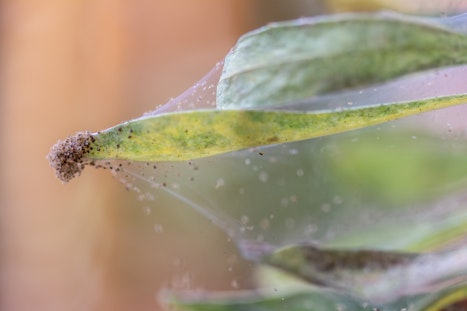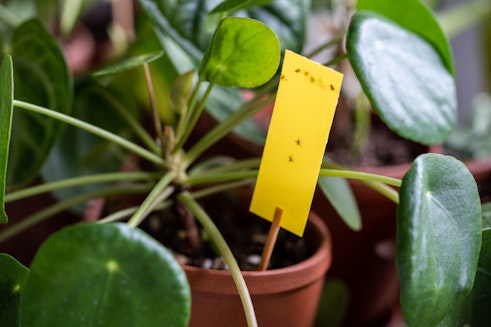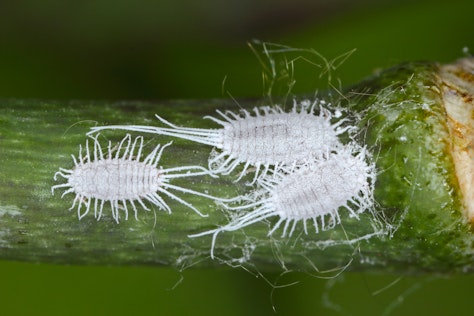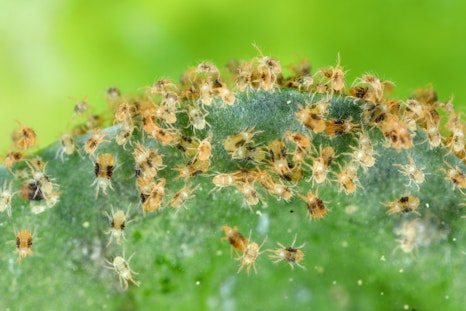
- Home
- Aphids - What are they and how do I get rid of them?
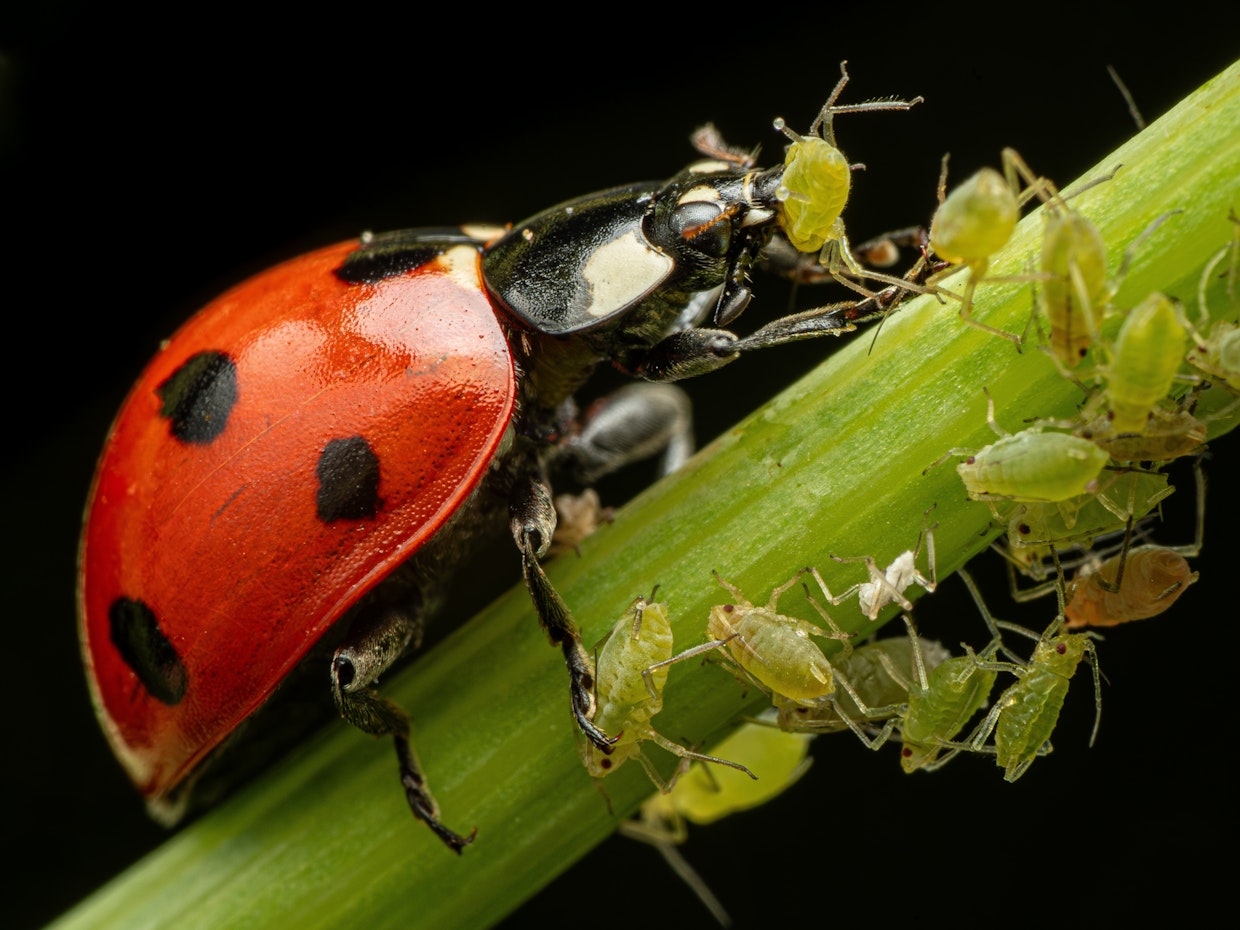
Introducing... the poster-child of all indoor plant pests, the green menace: Aphids. These silly little sap suckers aren’t hugely threatening to look at, they don’t move very far, nor are they horrifically ugly or scary looking. Instead, they are goofy little green guys who sit and devour the soft tissue of your favourite plants, seemingly unmoved by the goings on around them. It almost makes you feel bad. Until you see what they’ve done to your plants… Use this guide to help put a stop to aphids!
First of all, it is important to note that the presence of pests says little to nothing about their keeper. Bringing plants into a house is like opening up a new, little ecosystem in your home. In the wild, these ecosystems contain all manner of beasts that keep each other in check and maintain a perfect balance, so that everything can thrive the way evolution intended. Unfortunately, in a home, the aspects of your ecosystem that are missing can be those which keep things like pests from getting out of control. As a result, we as plant-keepers must intervene. This is true for plant keeping at any level: from an orchid in the kitchen window, to an elaborate botanical garden greenhouse.
What is an aphid?
Aphids are sap-sucking bugs of the superfamily Aphidoidea. They are small insects that eat sugars from the sap of plants. They are able to reproduce asexually, and in some instances even give birth to already pregnant females, so their ability to reproduce very quickly makes them a concern for the gardener. Aphids have become a nearly cosmopolitan species, meaning they are now present in nearly all parts of the world.
How do I know if I have aphids?
The symptoms to look out for are as follows:
Look for bugs: Aphids are thankfully not hard to spot. They typically appear around the younger stems and leaves of plants, normally in numbers and are an assortment of colours from a pale green to amber, with on rare occasions aphids being entirely white, brown or black. They appear as little jelly-like dots on the stem, which only look insect like as you get up close!
Look for damage: Aphids do not often move around a plant that they are eating, so most of the damage is present in new growth. If the new growth of a plant looks pale, weak, malformed or totally dying check the stems for aphids!
Look for honeydew: Aphids leave behind a sugary substance called honeydew, that looks like little sticky bubbles of dew. Sometimes, when aphids have been removed they leave this sticky honeydew behind. Typically, you will spot the aphids before you spot the honeydew, but if the part of a plant they are eating is dying they can migrate to another part of the plant, or another plant entirely.
How do I get rid of aphids?
There are several solutions to remove aphids, depending on the severity of the infestation.
- Spray: For light infestations, aphids can be removed by force, with a spray of water from a pressurised bottle. This can physically remove them from the plant without the use of any chemicals or materials.
- Wipe: Similarly, wiping the stems, petioles and leaves of the infested plant with a wet cloth can physically remove them, and eliminates any possible tissue damage from the impact of a spray bottle.
- Prune: Sometimes, the infestation can be present only on one section of a plant, if possible, the removal of this section can eliminate the infestation entirely. Otherwise, the removal of any affected leaves can also stop the infestation. This is a good method for stronger plants that may only be affected on their soft, new growth.
- Dispose: For severe infestations that cannot be controlled, disposing of the affected plant can be the only solution. This ensures that the infestation cannot spread to other, nearby plants.
- Alcohol: A combination of 70% rubbing alcohol and water, applied to the body directly, dissolves the exoskeleton and ensures that the aphid succumbs to the elements and dies. This should be reapplied every few days until the infestation is gone.
- Insecticidal soap: Mixing a concentration of Insecticidal soap and water, and applying it to all parts of the plant with a spray bottle is a good method to ensure that the whole plant is treated.
- Repotting: For root infestations, changing the soil and washing the roots with insecticidal soap can be a good solution to ensure that the aphids are not hiding in the soil.
- Horticultural oil: Applying neem oil can coat aphids and suffocate them. The oil can be mixed with water and sprayed directly onto the plant, or poured into the soil for root infestations. These processes should be repeated every few days until the infestation goes away.
- Natural predators: Introducing natural predators can be an effective and long lasting way to control aphid infestations. Predators can be found easily online and are best for greenhouse or outdoor environments. But for indoor environments, you can use Amblyseius californicus or for a faster acting solution, lacewing (Chrysoperla carnea) or ladybird (Anatis ocellata) larvae, although these will be visible with the naked eye, so not recommended for the squeamish!
The best way to ensure complete control over an aphid infestation is to use a combination of the above techniques, and to regularly check all plants, and repeat processes until there has been no sign of aphids for at least a week.
How can I prevent them in the future?
The prevention of aphids is a useful factor in ensuring that infestations do not have to be tackled. Luckily, aphids are not prolific travellers, and are unlikely to infest your home unless brought in on something else. There are several ways you can ensure that aphids stay away from your plants:
- Isolate infested plants: If an infestation is found, isolate the affected plant to ensure the infestation doesn’t spread to others.
- Check new plants: When purchasing a new plant, check it thoroughly for pests before bringing it home. Most aphid infestations come from outside the home, and many are brought in on plants. Some people suggest isolating all new plants for several weeks, just to be sure there is no risk of infestation.
- Keep plants healthy: Your plants are actually pretty good at fending off bugs by themselves. If they are in any way compromised, then their immune system will be less able to assist them during an infestation. So, avoid over and under watering, root binding and make sure they have adequate light!
- Check vulnerable plants regularly: The sooner an infestation is tackled, the easier it will be! Most plants can be a victim of mealybug attacks, but specific plants to keep an eye on are: Ficus, Aroids (Monstera, Philodendron, Aglaonema, Epipremnum etc.), Hoya, Orchids, Ferns and Dracaena. These plants all have adequate hospitable space on their stems or bodies for aphids to attach themselves to. Be sure to check new growth, as its recent formation means the tissue is soft and easily punctured by the aphids’s mouth. Resultantly, it is more susceptible to an infestation.
- Check tools & sundries: aphids can survive for brief periods on tools, and can be transferred unknowingly to plants through use. When using tools such as pruning scissors or trowels, ensure to wash them afterwards to ensure there are no unwanted hitch-hikers. When repotting plants, it is always a good idea to wash nursery pots or ceramics before or after use.
Remember that prevention is always the best solution, and can ensure you never have to deal with aphids in the future. However, if they do find their way onto your plants, don’t panic. Return to this guide at any time, try any of the above methods, and the aphids will regret the day they picked your plants to bother!
Jonathan Davies
Jonny has worked at Root since May 2023. His love for plants was inherited initially from his grandparents and parents, but really took off once he moved into his own place, where he started picking up small plants and was fascinated by watching how they grow and change over time. Jonny has a degree in Archaeology and Classics from the University of Sheffield, and a masters in Egyptology from Swansea University, where he primarily focused on garden culture in the ancient world, which he has managed to extend to a PhD thesis in the University of Liverpool, where he has been able to combine his love for plants with his love for ancient language and culture. Jonny loves being in the natural spaces around North Wales and Cheshire where he used to go growing up, and often spends hours examining the plants and trees, and kicking up the leaf litter searching for mushrooms and insects. He is fascinated most by plant biology, taxonomy and learning about ecosystems and interactions between plants and their environmental counterparts, and enjoys tending to his varied array of houseplants, and ongoing ‘plant projects’, such as growing plants from seeds and creating living epiphyte displays. Aside from his green thumb, his other interests include: art, reading, listening to and playing music in the company of his cats, Spooky and Boo.
More by Jonathan DaviesRelated Articles
View all articles
